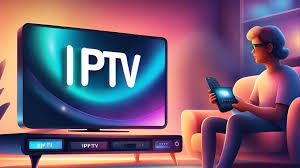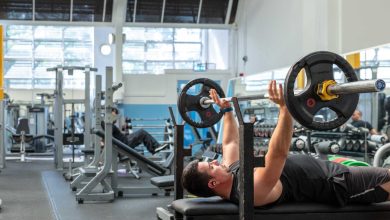Perfume Bottles as Art: Masterpieces of Glass and Design

Perfume bottles are not merely vessels for containing fragrances; they are exquisite works of art that embody the intersection of glass craftsmanship and design innovation. Throughout history, perfume bottles have served as symbols of luxury, elegance, and beauty, captivating collectors and enthusiasts with their intricate designs and stunning aesthetics. From ancient civilizations to modern-day masterpieces, perfume bottles have evolved into objects of desire that transcend their utilitarian function and elevate perfumery to the realm of high art.
The Ancient Origins of Perfume Bottles
The history of perfume bottles can be traced back to ancient civilizations such as Mesopotamia, Egypt, and China, where fragrances were prized for their therapeutic and religious significance. The earliest perfume bottles were simple containers made from materials like clay, stone, and glass, often adorned with intricate designs and symbols.
In ancient Egypt, perfume played a central role in religious rituals and daily life, with elaborate glass bottles used to store precious oils and unguents. These bottles were often crafted with exquisite detail, featuring intricate patterns, hieroglyphics, and symbolic motifs that reflected the Egyptians’ reverence for beauty and symbolism.
The Romans further refined the art of perfume bottle design, creating delicate glass vessels known as “unguentaria” that were used to hold perfumes and oils. These bottles were often made with colored glass and decorated with intricate patterns and designs, showcasing the Romans’ skill and artistry in glassmaking.
The Renaissance of Perfume Bottle Design
The Renaissance marked a revival of interest in the arts and sciences in Europe, leading to a renewed appreciation for perfume bottle design. European nobility commissioned elaborate perfume bottles made from precious materials such as gold, silver, and crystal, adorned with intricate engravings, gemstones, and decorative motifs.
During this period, perfume bottles became status symbols, with wealthy individuals commissioning custom-made bottles to showcase their wealth and sophistication. These bottles were often crafted by master artisans and jewelers, who employed techniques such as engraving, gilding, and enameling to create exquisite works of art that reflected the tastes and sensibilities of the Renaissance.
The Art Nouveau Movement: A Golden Age of Perfume Bottle Design
The late 19th and early 20th centuries saw the emergence of the Art Nouveau movement, which had a profound impact on perfume bottle design. Characterized by its organic forms, sinuous lines, and intricate ornamentation, Art Nouveau brought a new level of elegance and sophistication to perfume bottles, elevating them to the status of objets d’art.
One of the most influential figures in Art Nouveau perfume bottles design was René Lalique, a French glassmaker and jewelry designer known for his innovative use of glass and avant-garde designs. Lalique’s perfume bottles were characterized by their flowing lines, natural motifs, and delicate detailing, capturing the essence of the Art Nouveau aesthetic.
Art Deco: The Age of Glamour and Sophistication
The Art Deco movement, which emerged in the 1920s, brought a new sense of glamour and sophistication to perfume bottle design. Characterized by its geometric shapes, bold colors, and luxurious materials, Art Deco perfume bottles exuded a sense of modernity and elegance that reflected the spirit of the Roaring Twenties.
During this period, perfume bottles became more than just containers for fragrances; they were symbols of modernity, progress, and luxury. Brands like Chanel, Guerlain, and Coty embraced the Art Deco aesthetic, creating sleek, streamlined bottles that captured the zeitgeist of the era.
Contemporary Perfume Bottle Design: Innovation and Creativity
In the 21st century, perfume bottle design continues to evolve, with designers pushing the boundaries of creativity and innovation to create truly unique and memorable objects. Advances in technology, materials, and manufacturing techniques have opened up new possibilities for perfume bottle design, allowing designers to experiment with unconventional shapes, structures, and finishes.
One of the key trends in contemporary perfume bottle design is the use of sustainable materials and eco-friendly production methods. Brands are increasingly turning to recycled glass, biodegradable plastics, and renewable resources to create perfume bottles that are not only beautiful but also environmentally responsible.
Another trend is the integration of technology into perfume bottle design, with brands incorporating features such as LED lights, digital displays, and interactive elements to create immersive and engaging experiences for consumers. These high-tech bottles not only enhance the visual appeal of the fragrance but also provide valuable information and entertainment to users.
Collecting Perfume Bottles: A Passion for Beauty and History
For collectors and enthusiasts, perfume bottles hold a special allure, representing a unique blend of beauty, history, and craftsmanship. Collectors often specialize in specific periods, styles, or designers, seeking out rare and unique bottles to add to their collections.
Antique perfume bottles are particularly prized among collectors, with bottles from renowned designers and manufacturers fetching high prices at auction. Lalique, Baccarat, and Tiffany are just a few of the brands whose bottles are highly sought after by collectors, with some rare examples commanding six-figure sums.
In addition to antique bottles, collectors also seek out contemporary pieces by up-and-coming designers and artists, looking for innovative and avant-garde designs that push the boundaries of traditional perfume bottle design. These modern masterpieces are often coveted for their artistic value and collectible appeal, with some bottles becoming sought-after collector’s items in their own right.
Conclusion: The Enduring Appeal of Perfume Bottles as Art
Perfume bottles have long been celebrated as objects of beauty, craftsmanship, and design, captivating collectors and enthusiasts with their exquisite details and stunning aesthetics. From ancient vessels to modern masterpieces, perfume bottles continue to inspire awe and admiration, serving as symbols of luxury, elegance, and artistic expression.
As we look to the future, perfume bottles are poised to remain at the forefront of design innovation, with designers pushing the boundaries of creativity and technology to create truly unique and memorable objects. Whether antique treasures or contemporary creations, perfume bottles will continue to hold a special place in the hearts of collectors and enthusiasts, reminding us of the enduring power of art and beauty in our lives.









